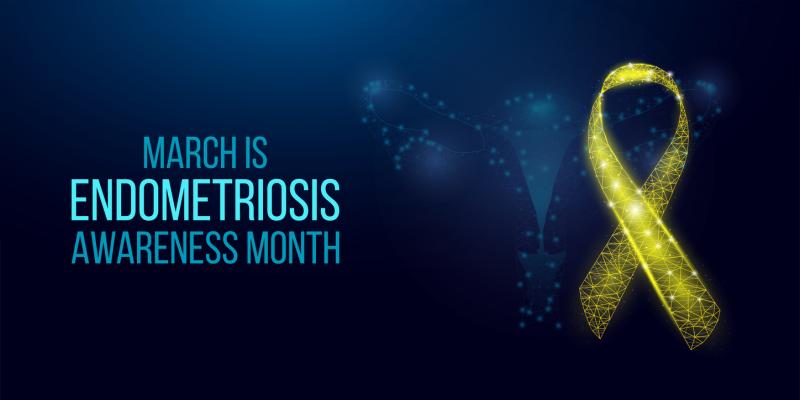Search by Color or Cause


National Endometriosis Awareness Month, observed in March and sponsored by the Endometriosis Association, raises awareness about a disease that affects millions of women around the world. The awareness color associated with endometriosis is yellow. A simple yellow ribbon or yellow-colored wristband can help you spark conversations anywhere. Wear a fabric ribbon or one made of enamel to call attention to this important awareness month.
Statistics show that endometriosis affects five million women in the United States and is most common among women in their thirties and forties. There are a lot of factors that contribute to delay in diagnosis. For example, this includes the fact that doctors and society often normalize period-related pain. That’s why endometriosis is sometimes called the “missed disease.”
National Endometriosis Awareness Month and the Endometriosis Association educate women and men about endometriosis. Endometriosis occurs when the lining of the uterus grows outside of the uterus. It can grow on the ovaries, behind the uterus or on the bowels or bladder. This “misplaced” tissue can cause pain, infertility, and very heavy periods. The pain usually occurs in the abdomen, lower back or pelvic areas. Endometriosis growths bleed in the same way the lining inside of the uterus does every month. This is similar to what happens during a woman’s menstrual period. This can cause swelling and pain because the tissue grows and bleeds in an area where it cannot easily exit the body.
Annually observed during March as National Endometriosis Awareness Month, this awareness-raising month draws attention to the condition affecting approximately 190 million women globally. This statistic is according to the World Health Organization. Endometriosis can have a devastating effect on the quality of life of women who suffer from this condition. Having to live with painful physical symptoms have harmful effects on the emotional wellbeing of women, too. This awareness month recognizes their suffering.
Numbers from the U.S. Department of Health and Human Services Office on Women’s Health indicate that more than 11 percent of American women, or more than 6.5 million women, are affected by endometriosis. Symptoms and outcomes include pain, heavy periods, and infertility.
According to experts, “If you have painful periods that prevent you from going to school or work, or pelvic pain that is affecting your quality of life, this is not normal. Endometriosis is treatable. If you have concerns that you may have this condition, seek care from a gynecologist.
Endometriosis can’t be prevented, according to the U.S. Department of Health and Human Services Office on Women’s Health. However, women can reduce their chances of developing it by lowering the levels of the hormone estrogen in their bodies with regular exercise. Other things to avoid are large amounts of alcohol and caffeinated drinks. In addition, it is important for women to talk to their doctors about hormonal birth control methods, which can play a key role. Currently, there is no cure for endometriosis, but treatments are available for the symptoms and challenges it causes.
For more information regarding endometriosis, visit the government website of the National Library of Medicine at https://medlineplus.gov/endometriosis.html.